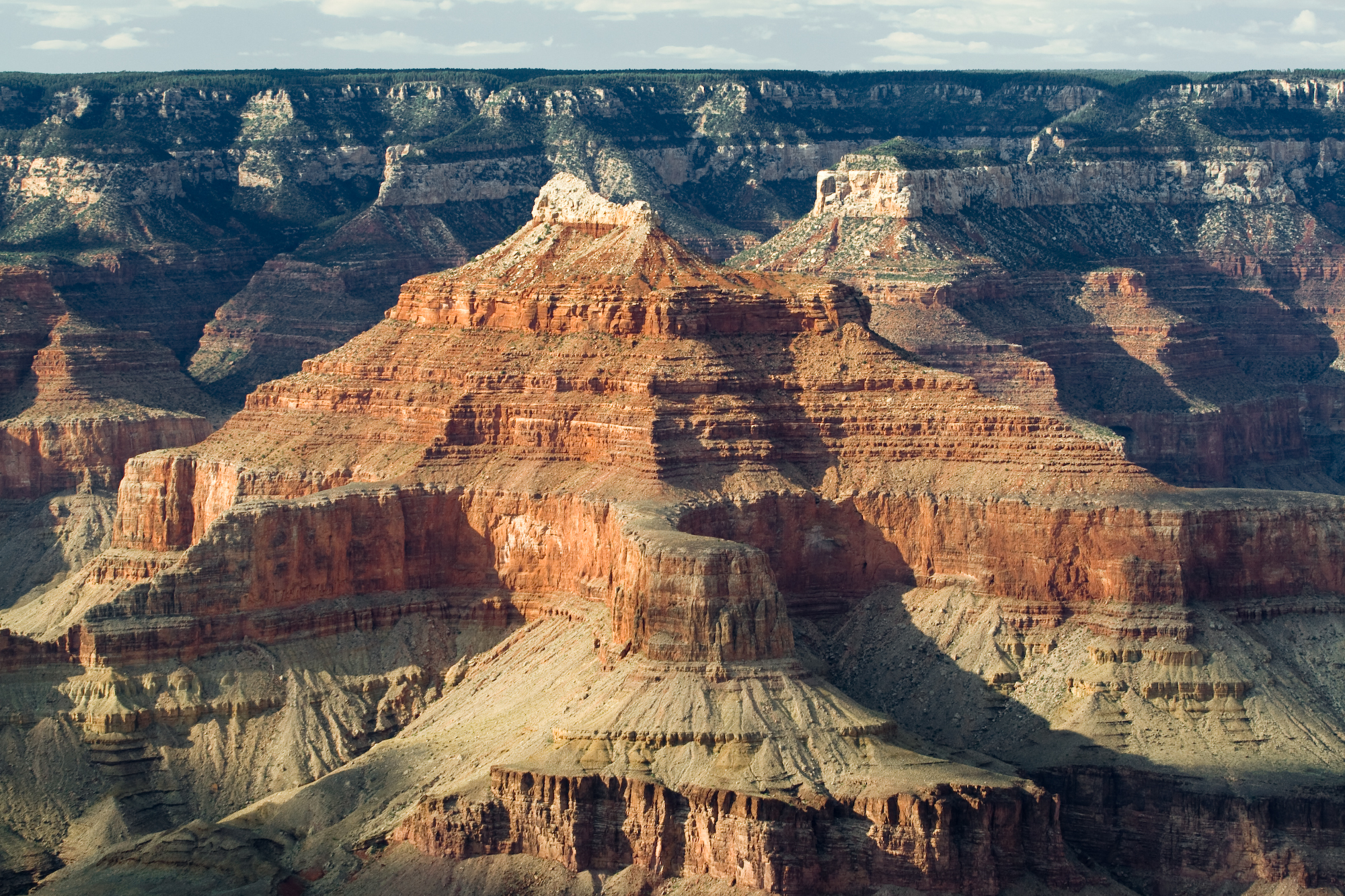 |
| http://upload.wikimedia.org/wikipedia/commons/f/fe/USA_09855_Grand_Canyon_Luca_Galuzzi_2007.jpg |
There are many layers of rocks that form the Grand Canyon. These layers are called Strata, which are sedimentary rocks that are deposited in layers. The canyon is composed of different kinds of sedimentary rocks such as: shale, sandstone, limestone, and granite. All of these rocks have lithified over time. Geologist use these rock layers to research and learn more about Geological Time Scale, which describes event that occured millions of years ago.
 |
| Geological Time Scale http://en.wikipedia.org/wiki/File:Geologic_Clock_with_events_and_periods.svg |
 |
| Diagram shows the different layers of sedimentary rocks http://upload.wikimedia.org/wikipedia/commons/1/14/Stratigraphy_of_the_Grand_Canyon.png |
Along with the Grand Canyon, Arizona is also home to another geological site, the Vulcan Volcano. The Vulcan Volcano is cinder cone volcano located on the north rim of the Grand Canyon. When pieces of rock, tephra, are ejected out of the volcano, the tephra falls back down creating a plyroclastic volcano and also forming very small crystals..
Images of Vulcan Volcano
 |
| Formation of Cinder Cone Volcano (used from Dr. Casey's ppt) http://fast.ucdenver.edu/case/1202/Battle/Build/VolcanicEx/tephra_diagrams.gif |
Works Cited:
http://fast.ucdenver.edu/case/1202/Battle/Build/VolcanicEx/tephra_diagrams.gif
http://upload.wikimedia.org/wikipedia/commons/1/14/Stratigraphy_of_the_Grand_Canyon.png
http://en.wikipedia.org/wiki/File:Geologic_Clock_with_events_and_periods.svg
http://upload.wikimedia.org/wikipedia/commons/f/fe/USA_09855_Grand_Canyon_Luca_Galuzzi_2007.jpg
http://www.und.edu/instruct/mineral/101intro/grandcanyon/grandcan.htm
http://www.obsidianlab.com/pan_toroweap/vulcans_throne_pan.html
http://www.extremescience.com/zoom/index.php/volcanoes/31-cinder-cone-volcanoes
http://www.bobspixels.com/kaibab.org/geology/gc_layer.htm#kl
http://en.wikipedia.org/wiki/Grand_Canyon#Geology
Hi Abdul! You did a very nice job making an organized blog post. From what I can tell, everything flows very nicely. The pictures and captions are spaced well and provide just the right amount of information. Your post was also fun to read. It would be awesome to see more pictures of the actual location!
ReplyDelete-Kristin Simpson
The Grand Canyon seems like a very interesting place. I enjoyed learning about the different kinds of sedimentary rocks. I would love to know more about the material content of shale, sandstone, limestone and granite. How do their material content contribute to the wild life and plant life in the Grand Canyon. Also, I found the "Grand Canyon's Three Set of Rock", diagram very helpful please include more pictures.
ReplyDeleteHello Abdul,
ReplyDeleteI also really like your blog, I was actually really interested in the Vulcan Volcano. I saw that you wrote about how from time to time it will shoot out tephra and it made me wonder if that includes pryolastic flow. Or is it just the tephra? I wished you had spoken more about the Volcano but either way I really enjoyed reading this post.
-Noemi Urena